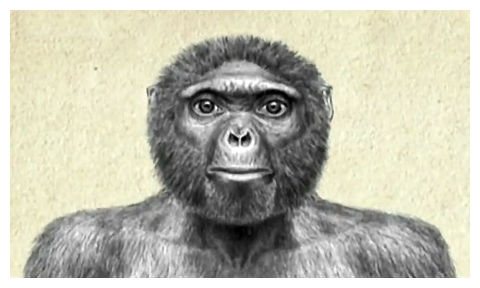
© YouTube Screenshot
were not the only kind of humans to reside on this planet. Two experts in the field exposed to the Voice of Russia that other forms of humans died out due to poor social networking and climate. Interbreeding between
Homo sapiens and Neanderthals went on hundreds and thousands of years ago, making modern humans around one percent Neanderthal according to the newest book on evolution,
Lone Survivors."There is no single center where we originated even within Africa, our origins were kind of composite, a patchwork, Professor Chris Stringer, author of
Lone Survivors and Researcher at the Natural History Museum in London said and added, "So different bits of Africa contributed to what we call today modern humans."
The new theory on how present day humans came to be, according to the book
Lone Survivors, is that we came from Africa and then journeyed from there. However, we are not full bred modern humans, as we all have a microscopic percentage of Neanderthal DNA in us, if originally from Europe.
Though, Australians and New Guineans have an extra ingredient in their DNA, from an archaic human known as the Denisovans. This group was discovered in a cave in Siberia, and those with the Denisovan gene, also have Neanderthal and modern human roots tied to them.
It was more than likely that interbreeding made it possible for certain humans, who were not used to the environment, to have offspring that would survive through disease and other possible debilitating factors of the region.
"The people coming out of Africa, their immune system's going to be naïve so when you do interbreed the genes that would cross the barrier are the beneficial genes," Professor of Anthropology Todd Disotell of New York University explained. Still, even if present day
Homo sapiens back then had issues with adapting to external environment which were foreign to them, their offspring would have an easier time dodging diseases.
Though, a crucial hurdle must have existed between the different types of humans who were around at that point in time. From a scientific standpoint of view, genetic barriers were prominent though the HLA gene transferred between
Homo sapiens and Neanderthals, which is associated with the immune system.
After years of being residents on planet Earth, modern day humans lived to see this day and age while the other breeds died out. It is currently unclear as to why specifically the other types of humans went extinct though researchers can speculate as to how they vanished from their land. Professor Stringer said to the Voice of Russia that "because we had cultural adaptations and probably more network social groups, social groups that network with each other much more", this could be a contributing factor as to why we still stand tall today..
Some circumstances for evolutionists are near impossible to measure, such as if the other humans spoke a language between one another. "Certainly there would have been communication issues, there would have been technology, and there may have been religious differences as well," Professor Disotell noted.
Evidence of this magnitude may make some wonder whether or not this allows people to reject Darwin's theory of evolution or not. During Darwin's time, there was no fossil record like the one that is presently in existence.
"He wasn't right about everything, certainly not but I think that his ideas of natural selection are still very important terms of explaining why humans have changed but of course what's also important for us is cultural evolution," concluded Professor Stringer.
Continuing to collect evidence from the past on these other forms of humans, may unlock even more about our ancestors that we never knew before. A lack of clarity remains over how present day humans may get swept up in the evolutionary cycle, and be replaced by a new type of human.
We are still evolving though, if not through scientific means then through cultural and technological paths. For the time being though, we will just have to remember that humans have come a long way in the timeline of evolution and perhaps have a long way to go.
protein ringed?
Human (us) mdna isn't, it is susceptible to epigentic tagging thru histones and methylation. Does a ketogenic diet such as the Neanders and the Denisovians would have consumed restore that? Or did they come equipped with a protein (fat) ring to protect the mdna from damage?
Could it be that the accessibility of the easy alteration of mdna of humans (us) be what allowed us to spread with relative ease over the Earth?